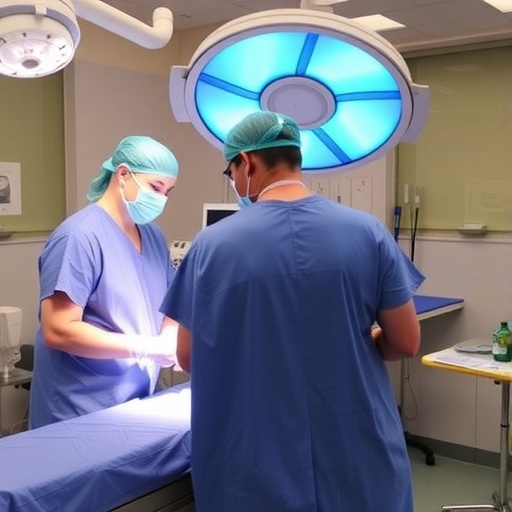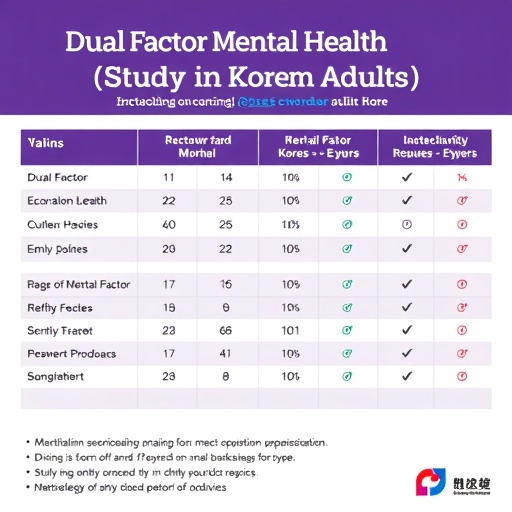
Revolutionizing Pediatric Spine Surgery: Ochsner Children’s Performs Louisiana’s First Robotic-Assisted Pediatric Spine Deformity Operation
In a groundbreaking advancement for pediatric orthopedic surgery, Ochsner Children’s has successfully completed the first-ever robotic-assisted pediatric spine deformity surgery in Louisiana and the broader Gulf South region. This landmark procedure marks a significant evolution in surgical precision and patient safety, underscoring Ochsner Children’s pioneering role in bringing innovative, technology-driven health solutions to children suffering from complex spinal conditions. The integration of cutting-edge robotics heralds a new era in pediatric spine deformity care, one defined by unprecedented accuracy and improved clinical outcomes.
The innovative operation was expertly performed by pediatric orthopedic surgeons Dr. Ryan Farmer and Dr. Lawrence Haber, utilizing the innovative ExcelsiusGPS® robotic system developed by Globus Medical. The patient, afflicted with Scheuermann’s kyphosis—a condition typified by an exaggerated forward curvature of the spine—benefited from a procedure that merges robotics with real-time imaging to execute surgical plans with striking precision. This fusion of advanced technologies allows surgeons to accurately position spinal implants while minimizing risks, enhancing both the safety and effectiveness of the intervention.
.adsslot_c2lwfTXLWE{width:728px !important;height:90px !important;}
@media(max-width:1199px){ .adsslot_c2lwfTXLWE{width:468px !important;height:60px !important;}
}
@media(max-width:767px){ .adsslot_c2lwfTXLWE{width:320px !important;height:50px !important;}
}
ADVERTISEMENT
Scheuermann’s kyphosis presents a complex operative challenge due to the abnormal angulation and rigidity of the spinal curvature, often requiring delicate manipulation and precise instrumentation to correct the deformity. Traditional surgical approaches have been limited by the constraints of human tactile feedback and two-dimensional imaging. However, the robotic platform employed at Ochsner Children’s transcends these limitations, offering three-dimensional visualization and computer-guided trajectory planning that empowers surgeons to perform with millimeter-level accuracy.
The ExcelsiusGPS® robotic system represents a paradigm shift in spine surgery. It integrates preoperative planning with intraoperative navigation, allowing surgeons to meticulously pre-determine implant size, trajectory, and location before making any incisions. This sophisticated guidance system uses real-time data and robotic arm assistance to drill and insert pedicle screws with unparalleled precision. Such advancements significantly reduce intraoperative variability, decrease potential for neurovascular injury, and streamline the overall operative workflow.
Utilizing robotic assistance in pediatric surgeries is particularly transformative. Children’s smaller anatomical structures demand exceptional finesse and accuracy, as any deviation can lead to long-term functional impairments. The robotic platform’s ability to calculate and execute precise implant placements ensures optimal alignment and fusion, which directly correlates with postoperative improvement and decreased complication rates. This breakthrough elevates the standard of care, offering pediatric patients safer alternatives and faster recoveries.
Dr. Ryan Farmer highlighted the critical benefits of this integration, emphasizing how computer-assisted imaging combined with robotic control fundamentally enhances surgical precision. These features not only help avoid critical anatomical structures but also optimize biomechanical correction of the spine. Conducting such technically demanding procedures with robotic guidance diminishes the margin for error, ultimately leading to improved patient safety and better clinical outcomes.
Furthermore, the robotic system empowers surgical teams by allowing them to simulate and plan intricate details before entering the operating room. This preoperative insight informs decisions on the optimal surgical approach and implant configuration, enhancing efficiency during surgery and minimizing exposure to anesthesia and fluoroscopy. This meticulous planning process is instrumental in complex cases such as kyphosis correction, where nuanced adjustments can make profound differences in patient mobility and quality of life.
Dr. Lawrence Haber, section head of pediatric orthopedics at Ochsner Children’s, underscored the significance of this milestone for families throughout the Gulf South region. The adoption of robotic-assisted technology represents more than a technological upgrade—it reflects a commitment to advancing pediatric surgical care and expanding access to the latest medical innovations for children with spinal deformities. This achievement confirms Ochsner Children’s position at the forefront of pediatric orthopedic excellence.
Ochsner Children’s continues to cultivate an environment that fosters innovation, continually embracing state-of-the-art technologies to improve patient care. The introduction of robotic-assisted spine surgery aligns seamlessly with its legacy of clinical leadership and dedication to advancing pediatric health. Such technological adoption not only improves outcomes for individual patients but also propels the entire field of pediatric orthopedics toward greater precision and safety.
The milestone also highlights the role of industry partnership in driving medical innovation. Globus Medical, known for its focus on engineering excellence and rapid advancement in spinal surgery technologies, has played an integral role in developing the ExcelsiusGPS® platform. This collaboration between healthcare providers and medical technology firms exemplifies how interdisciplinary synergy accelerates progress and expands therapeutic possibilities for challenging pediatric conditions.
As Ochsner Children’s embarks on this new chapter with robotic-assisted pediatric spine surgery, families in Louisiana and across the Gulf South can look to a future where complex spinal conditions are treated with greater confidence and precision. The confluence of robotic systems, expert surgical teams, and cutting-edge planning tools portrays a model of modern pediatric care that is safer, more accurate, and increasingly effective at restoring mobility and quality of life for young patients.
Incorporating such high-precision technology in pediatric orthopedics is a testament to Ochsner Children’s relentless pursuit of excellence and innovation. This pioneering procedure not only sets a new benchmark for surgical safety in children but also exemplifies how leveraging next-generation robotics can revolutionize the treatment paradigm for spine deformities. As this technology continues to evolve, it promises to redefine surgical possibilities and improve patient outcomes worldwide.
The success of this surgery echoes across the pediatric healthcare landscape, sparking anticipation for broader adoption of robotic-assisted techniques in other intricate orthopedic interventions. Ochsner Children’s dedication to harnessing technological advancements ensures that children with spinal disorders will continue to receive care that is not just reactive, but truly transformative—combining human expertise and robotic precision to achieve the best possible results.
Families interested in learning more about these pioneering pediatric orthopedic procedures can explore Ochsner Children’s nationally ranked program, which continues to set high standards in innovation, safety, and comprehensive care for children with musculoskeletal disorders.
Subject of Research: Pediatric Robotic-Assisted Spine Surgery
Article Title: Revolutionizing Pediatric Spine Surgery: Ochsner Children’s Performs Louisiana’s First Robotic-Assisted Pediatric Spine Deformity Operation
News Publication Date: Not specified in the original content
Web References:
Ochsner Children’s Pediatric Orthopedics: www.ochsner.org/services/pediatric-orthopedics/
Globus Medical ExcelsiusGPS® Technology: www.globusmedical.com/musculoskeletal-solutions/excelsiustechnology/excelsiusgps/
Keywords: Pediatric Orthopedics, Robotic-Assisted Surgery, Spine Deformity, Scheuermann’s Kyphosis, ExcelsiusGPS®, Ochsner Children’s, Pediatric Surgery Innovation, Surgical Precision, Spine Surgery Technology, Pediatric Spine Care
Tags: enhancing surgical precision in childrenExcelsiusGPS robotic systemGulf South pediatric health careimproving outcomes in spinal surgeryOchsner Children’s Hospital innovationspediatric orthopedic surgery advancementspediatric spine deformity carepediatric spine surgeryrobotic-assisted surgery in childrenScheuermann’s kyphosis treatmentspinal deformity surgery techniquestechnology in pediatric surgery





